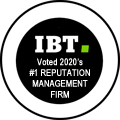New IPO Trend: Staggered Boardroom Musical Chairs
WebiMax Contributor, March 20, 2012
 Is your online business concerned with search engine rankings (surely, you've heard about potential Google changes to come) or fiscal business strategies? Trends often ferment online; leveraging IPOs and 'boards' is a current trend of big-boy brands, those banking on increased revenue, impressing brand consumers, and (more importantly?) investors too.
Is your online business concerned with search engine rankings (surely, you've heard about potential Google changes to come) or fiscal business strategies? Trends often ferment online; leveraging IPOs and 'boards' is a current trend of big-boy brands, those banking on increased revenue, impressing brand consumers, and (more importantly?) investors too.
Have you heard about a social-media big kid's incipient IPO? Similar situations have investors and to-be-influenced brands doing dances, playing musical-boardroom chairs. A NY Times article notices a trend; some public companies are rearranging boardrooms and members while others commence forth with staggered boards.
The Harvard Law School started a Shareholder Rights Project, submitting 87 board declassification proposals during the past season. The endeavor involves entrance agreements with 41 S&P 500 companies, making them commit to management proposals, seeking board declassification.
The project is working, inspiring about 1/3 of S&P 500 members, with staggering boards, to eliminate the dynamic. The Shareholder Rights Project has kept a keen focus on eradicating staggered boards because the arrangement places shareholders at a disadvantage. Within a staggered community, a third of directors are up for election any given year, which demands at least two years to replace the majority of a given ensemble.
So, what's the clamor really about? Many who support the Rights Project do not like how staggered ensembles play out. Some believe a staggered board serves as an anti-takeover device, smothering the board, protecting it from outside influence, the kind of influence shareholders desire. The heads of the project think directors are unfairly bullied (or self-serving), neglecting shareholders and pandering management (and themselves). As the Times article points out:
Since a company with a staggered board is harder to take over, bidders must pay more to do so.
Let's get back to trends. According to Times sources, 302 companies of the S&P 500 had staggered ensembles in 2002. In 2012, the number drops to 126. What about smaller companies? 900 other companies observed (outside of S&P) experienced a 25% decline in staggered trends since 2002.
However, this year, over 86% going-public brands 'have had' staggered boards (up from 64% in 2011). The dynamic has to do with outside influencers; further down the rabbit hole we go. Outside influence of the Harvard project variety, inspires companies to de-stagger. But one good turn deserves another. How about brands recently going public, those who worry about takeovers, those savvy about business but not legalities of business? They seek legal counsel. What do most lawyers suggest? From article:
And when companies go public, at least one study has found that they are heavily dependent on their lawyers for advice on what antitakeover mechanisms to adopt. These companies are probably receiving legal advice to adopt a staggered board.





